9 Ways to Improve NPS Response Rates
Read More

Let’s say you have a SaaS product that businesses use for project management. You’re making waves in the industry, but here’s the scoop – you recently lost three of your high-value customers. Ouch, right? So, you launched a product feedback survey to identify pain points and improve your product.
After gathering and analyzing your survey data, with the help of a robust product feedback platform, you realized that users are leaving because your tool doesn’t provide real-time team collaboration. Here, you identified the pain point and improved your product to better align with your customer’s expectations.
But is there a way where you can gather feedback from users in a structured way and not only when you lose customers?
Yes, there is!
One structured approach to collecting and harnessing product feedback is through the implementation of product feedback programs. These programs are specifically designed to streamline the process of gathering, analyzing, and acting upon customer feedback, in a well-structured manner.
So, with that in mind, let’s explore some of the product feedback program examples adopted by successful companies like Apple, Facebook, etc to get inspiration. – very well written intro
Here are some successful product feedback examples.
Do you know that Apple shares the highest customer satisfaction among consumers, with an astounding 72% of the customers rating their interaction with Apple as ‘very good’?
Well, numbers don’t lie and it is clearly telling us that Apple understands the significance of listening to the voice of their customers. They conduct regular customer surveys to gather feedback on their products and services. These surveys have been pivotal in improving their product offerings, enhancing the user experience, and refining their customer support services.
Key Takeaways: Apple’s commitment to customer surveys underscores the importance of actively listening to customer feedback. By paying attention to what their customers say, Apple has continuously enhanced its products and services, creating a strong brand reputation and fostering customer loyalty.
According to a recent study by Morgan Stanley, states that 92% of iPhone users who are ‘somewhat likely’ or ‘extremely likely’ to upgrade their phone in the next 12 months, intend to buy from Apple. This shows unwavering commitment and loyalty to the brand.
Apple serves as a remarkable example of how a structured product feedback program can contribute to long-term success in the tech industry.
In this digital world, Google helps us stay on top of things. Don’t know something? Let’s Google it!
But do you wonder how they do it? With the help of their beta testing programs.
By enlisting enthusiastic users as beta testers, Google taps into a valuable resource for gathering customer feedback, identifying bugs, and making crucial improvements before a public release. By doing so, Google can spot issues early in the development process and make improvements, resulting in a smoother, more user-friendly public release.
Key Takeaways: This approach underlines the value of involving real users in the testing phase and leveraging their insights to ensure product excellence. It’s a testament to how structured product feedback programs can lead to a more improved SaaS product and greater customer satisfaction.
Are you aware that when it comes to survey responses mobile surveys have a response rate between 1-3% whereas in-app surveys have a 13% response rate?
This is because in-app surveys ask for feedback from users right when they are interacting with the product. And Facebook understands its significance. It employs in-app feedback mechanisms to gather feedback on the usability of its platform, introduction of new features, and overall user satisfaction.
This real-time feedback loop enables Facebook to make prompt adjustments, thereby ensuring a consistently improved user experience.
Key Takeaways: This approach underscores the importance of creating a direct line of communication with users and acting on their feedback promptly, ultimately leading to increased user satisfaction and long-term platform success. It’s a testament to how well-structured product feedback programs can drive continuous improvement.
Launch Your First In-App Feedback Survey
Back in 2021, Salesforce adopted a unique approach to gathering product feedback by establishing a customer advisory board.
This board comprises key customers who actively participate in the company’s product development process, providing invaluable insights and direction. The members consist of prominent technology and innovation executives who represent Salesforce customers across industries.
Key Takeaways: Salesforce’s strategy underscores the importance of building strong relationships with key customers. By involving these customers in product development decisions, Salesforce ensures that its offerings are closely aligned with the needs and preferences of its user base.
This approach showcases the power of co-creating solutions with customers, resulting in higher retention rates and increased feature adoption, ultimately leading to greater customer satisfaction and business growth.
Happy employees equals happy customers. In fact, companies with delighted customers usually have employees who are 1.5 times more engaged.
And one company that understands the importance of employee engagement and has perfectly leveraged employee feedback into their product development is Microsoft. They have established an internal feedback program that encourages employees to share their insights and expertise. This has played a significant role in driving product enhancements and innovations.
Key Takeaways: Microsoft’s example underscores the value of tapping into the knowledge and experience of employees to drive product improvements. By creating a feedback culture within the organization, Microsoft leverages the collective wisdom of its workforce to inform and inspire product development. This approach not only fosters a sense of ownership and collaboration but also results in a continuous stream of innovative solutions.
Launch Your First Product Feedback Survey
The next product feedback program on the list is Uber’s. Uber has implemented a real-time feedback system that allows both riders and drivers to rate each other after each trip. This product feedback loop has proven to be a game-changer, enabling Uber to promptly address issues, maintain service quality, and continually enhance the overall experience for all users.
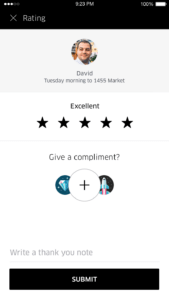
Key Takeaways: By actively listening to the voices of both riders and drivers and acting on their feedback, Uber has created a more reliable and enjoyable service, showcasing how structured product feedback programs can lead to enhanced user experiences and long-term success in the transportation industry.
YouTube employs a straightforward but effective product feedback program – the Like and Dislike buttons. These buttons provide users with an easy and immediate way to express their opinions on video content. This user feedback plays a vital role in how YouTube curates content, recommends videos, and continually enhances user engagement based on individual preferences.

Key Takeaways: By encouraging viewers to provide feedback, YouTube can tailor its content recommendations, thus shaping the platform’s content and user experience. This system showcases the power of simple, user-friendly feedback mechanisms in creating a more personalized and engaging user experience.
Reddit’s product feedback program is the same as YouTube’s but with a twist. It relies on its upvote and downvote system to give users the power to curate content. This system allows users to promote high-quality posts by upvoting them and demoting less valuable ones through downvotes.

The result is enhanced user engagement and a platform where relevant and valuable content naturally rises to the top.
Key Takeaways: Reddit’s upvote and downvote system is more than just a feedback tool – it’s a cornerstone of maintaining an active and vibrant community. By empowering users to collectively determine what content is worth their attention, Reddit ensures that quality and relevance are preserved.
Lastly, we will talk about the use of different feedback forms by Google as a part of its product feedback program. These feedback forms serve as a user-friendly tool for collecting detailed customer feedback on various aspects of Google’s products. This helps the company identify areas for improvement and refine its products and services.
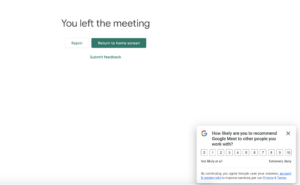
Key Takeaways: By actively seeking and acting upon user feedback, Google demonstrates how well-structured product feedback programs can lead to continuous improvements, higher user satisfaction, and products that better align with customer expectations, needs, and preferences.
Here are some key takeaways and actionable insights that will help you tailor product feedback programs for your business.
